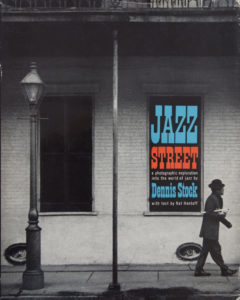 The passing of photographer Dennis Stock earlier this year (at age 81) inspired me to dig out my copy of a now 50-year-old volume, published by Doubleday in 1960. Looking through these black-and-white photographs is like seeing old friends again, though so many of those pictured — and now their chronicler, too — are gone.
The passing of photographer Dennis Stock earlier this year (at age 81) inspired me to dig out my copy of a now 50-year-old volume, published by Doubleday in 1960. Looking through these black-and-white photographs is like seeing old friends again, though so many of those pictured — and now their chronicler, too — are gone.
In 1982, Ralph Pomeroy wrote that Stock “…managed to evoke jazz without the assistance of sound — its places, its atmospheres, its times, its makers.” This is true. It should also be noted that Stock, best known for his authoritative photographs of James Dean, had done all this work by the age of 30. He was a member of the Magnum cooperative, the photographic equivalent of being in Duke Ellington’s band. John Morris, Magnum’s executive editor emeritus, calls this book Stock’s best work.
Even the posed portraits have a feeling of a process in progress, unfolding before the eye. Stock’s performance images are kinetically composed and captured, which, in this line of work, is, year in and year out, the toughest challenge of all.
I hope that both Stock and Milt Hinton would take it as a compliment when I say the immediacy and engagement of Stock’s photographs bring the directness of Hinton’s work to mind. Both produced pictures that evoke a friend working unobtrusively among friends.
Stock’s greatest contribution may have been this: he brought creative documentation of the peripheral into the mainstream of jazz reportage. He wasn’t alone in this, but he did it most comprehensively and best. His work whispers louder — saying more, and more profoundly — than some whose loudly self-declared specialty was jazz.
[pullquote]Stock brought creative documentation of the peripheral into the mainstream of jazz reportage.[/pullquote]
Whether it was Punch Miller walking home early on a New Orleans morning after playing all night, or Earl Hines in a moment of ecstasy during a club gig in San Francisco, or Red Callender posing comfortably at home, Stock’s images all look believable. His sense of composition was impeccable, yet understated to the point of looking more circumstantial than intentional.
For a single volume of one photographer’s work depicting practitioners of jazz, this book has seldom been equaled, and not yet surpassed. It’s so old that it doesn’t have an ISBN, much less a bar code. It’s Library of Congress Catalog # 59-12659. The dust jacket on my copy puts the hardback price at $6.95. Sigh.
At this writing, only one copy is listed online for under $100 (via Alibris). Other copies are going for upwards of $300 on Amazon. If you have access to interlibrary loans, that may be your best bet, and cost-free. Good luck.
Photos by Dennis Stock, circa mid to late 1950s.
Top: Red Garland and Miles Davis during a recording session, New York.
Bottom: Thelonious Monk in performance at Town Hall, New York.

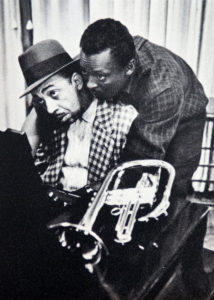
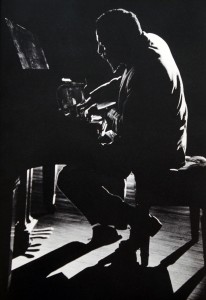
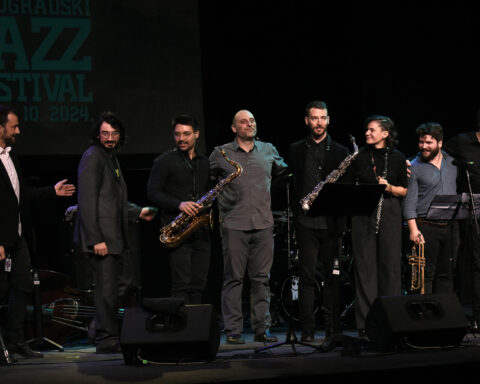
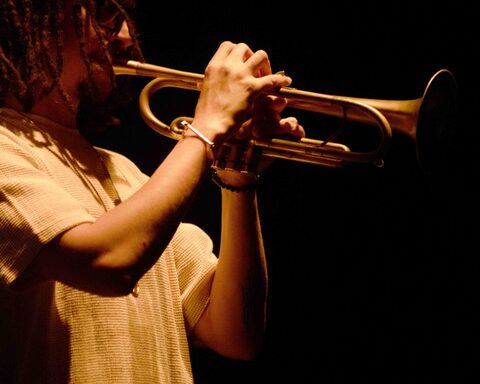
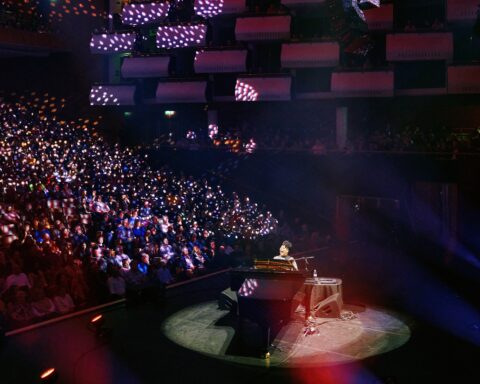
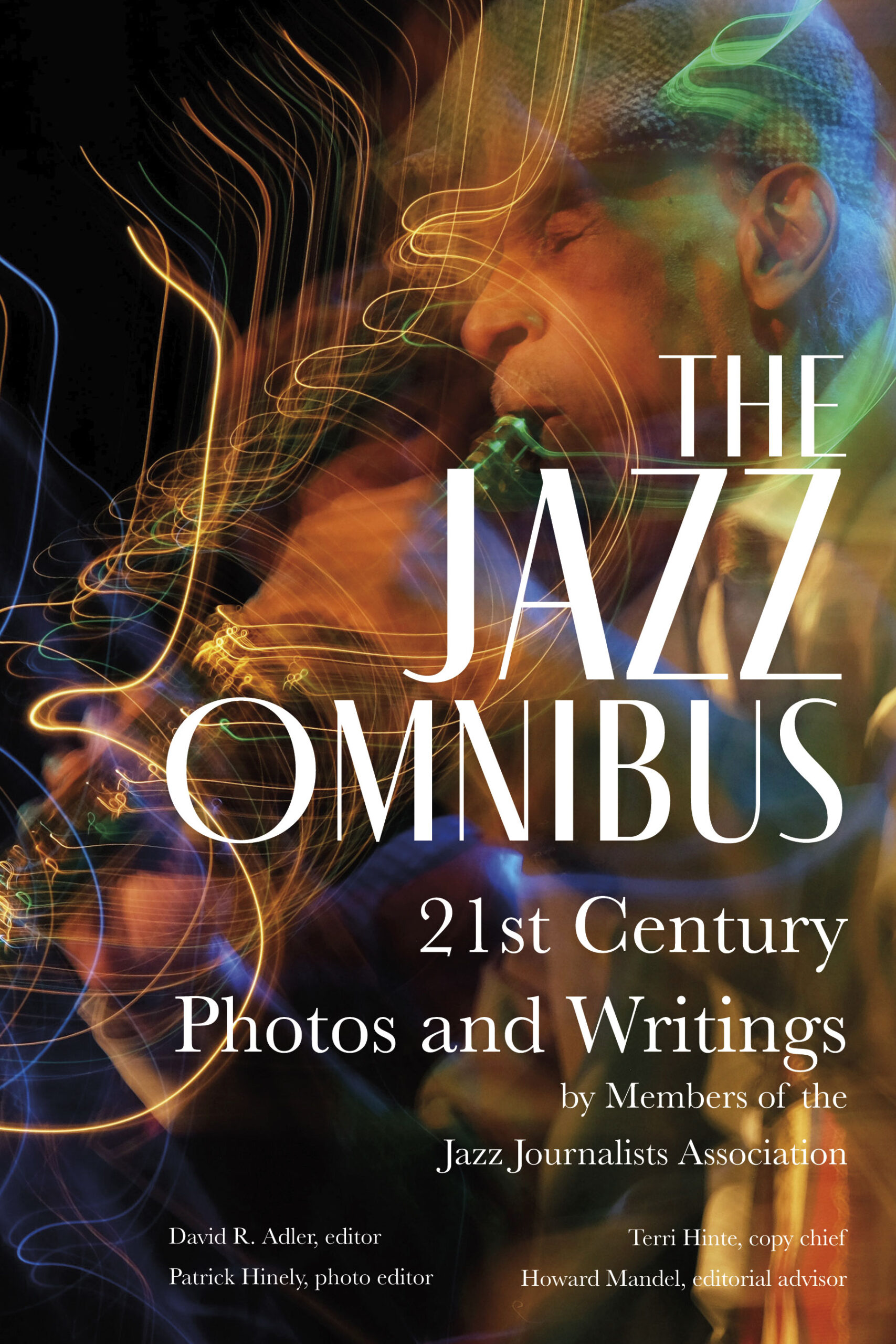
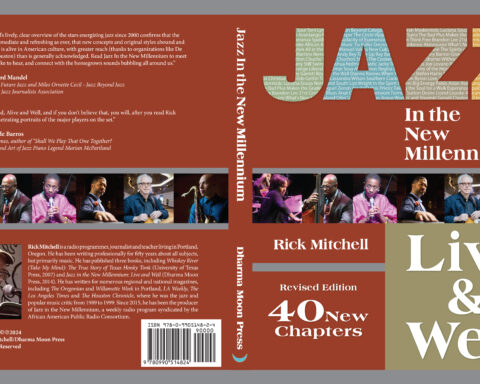
I had never heard of this photographer before. Those of us who are musicians sometimes do not come accross the paths of photographers but this is certainly appreciated as he was a musician but with a camera. Good pictures.
If memory serves, Stock's book actually is the expansion of a magazine (Look, I think) assignment on jazz that had him following his subjects before ever shooting them. The "candids" aren't always that. Witness his brilliant shot of Bill Crow schlepping his bass across Times Square. I once told Crow he was subject of my favorite jazz photo, and he replied that Stock had him repeatedly cross the street with the bass until he got the shot he wanted. Then I think he told me there was no such thing as Santa Claus.
Thanks to Patrick for this fine remembrance of my favorite book of Jazz photos! The shots certainly convey the music with intimacy and grace, reflecting a dedication and technical skill still all too rare, and the layout flows like a beautifully organized set. Unsurpassed, indeed!